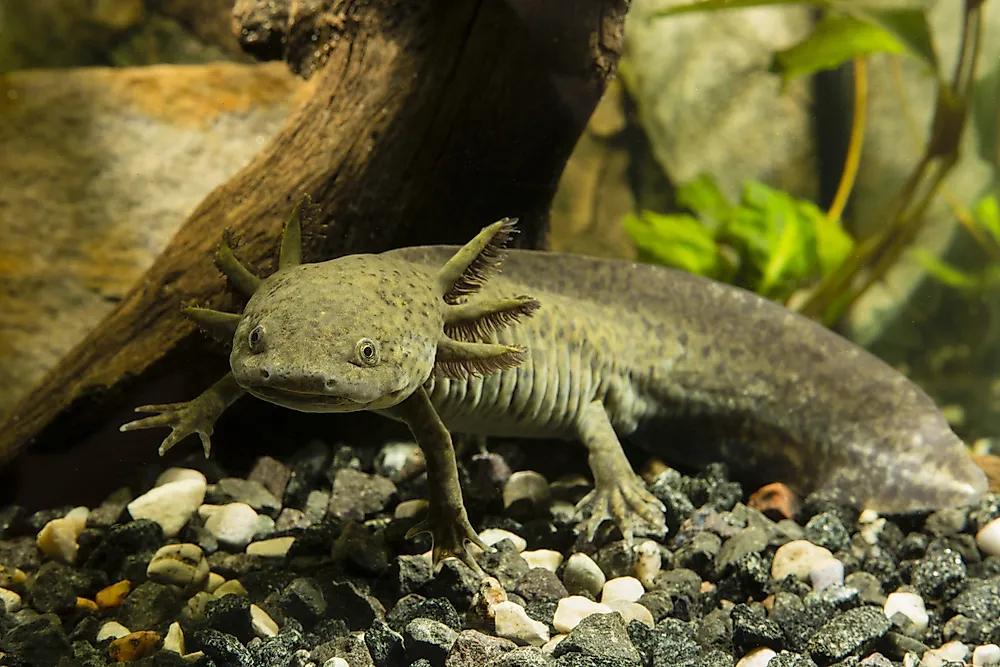Axolotl Facts - Animals of South America

The axolotl is a neotenic salamander that is related to the tiger salamander. It is also known as the Mexican walking fish or the Mexican salamander. Although it is commonly referred to a fish, the axolotl is an amphibian.
Physical Features
The Axolotls possess physical features typical to salamanders. Their heads are wide and while their eyes are lidless. They have underdeveloped limbs with long but thin digits. They have external gills and a caudal fin. A mature adult of between 18-24 month has a length of 6-18 in. Axolotls with lengths up to 9 inches are common than those with above 15 inches. They have very small vestigial teeth that develop during metamorphosis. The axolotls in the wild are brown/tan with gold speckles and olive undertone while the petted are mostly white/pink animals with pink eyes.
Behavior
The Axolotls are gentle amphibians and can be boring to watch. However, their mystique appearance and noetic nature make them fascinating. They remain in the larval stage for their entire life without undergoing metamorphosis. They reach sexual maturity in the larval stage. They spend their day hiding in submerged rocks and plants. They move slowly unless they are in a courtship when a rush of hormones makes them dance around.
Habitat And Range
The axolotl is native to Lake Chalco and Lake Xochimilco, central Mexico. However, they are only found in lake Xochimilco after lake Chalco was drained to avoid constant flooding. Lake Xochimilco exists as a series of canals. Axolotls in the wild are considered a threatened species The introduction of the African tilapia and the Asian carp proved to be a disadvantage as they feed on the axolotl’s eggs and young. In the wild, they prefer the bottoms of the lake where there are reeds and rocks while in captivity they are kept in aquariums with artificial plants and rocks.
Diet
The axolotls are adapted to various sources of food. They feed on trouts, salmons, pellets, wax worms, bloodworms, feeder fish, and earthworms. In dire situations, they resort to cannibalism. They are carnivorous, but their teeth are adapted for grasp and not bite. They prefer live food rather than remnants. In captivity, they are mainly fed black worms, white worms, blood worms, and salmon pellets.
Reproduction
Axolotls can reach maturity after five months. Factors such as their health, water temperature, and nutrition affect their sexuality. Male mature sexually than females. Before mating, the male and female go through a courtship process that involves dancing around. The female lays over 1,000 eggs at a time while the male produces a spermatophore for the female to fertilize the eggs.











